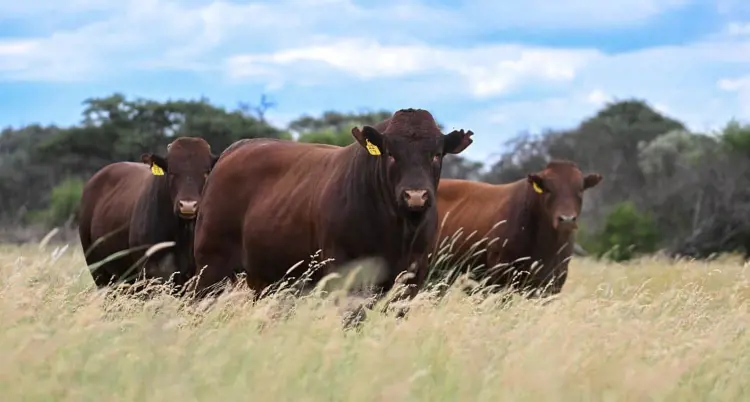The concept of Natural Power - Introduction
We are living in strange and exciting times where everything is accelerated. Much of what we experience today is what I refer to as a “drive-through mentality”. We make quick decisions and often seek instant gratification, failing to consider the long-term costs of our actions. We often focus on the “now” or the immediate future and disregard the cost of our current actions on the future.

We can already see the outcome of our lifestyles and choices in various aspects such as global weather pattern changes, caused by global warming, pollution of our planet by micro-plastics, resistance to available antibiotics (typhoid fever, etc) and the possible creation of superbugs that cannot easily be controlled by modern medicine.
Most of these are driven by population growth that exceeds the planet’s ability to produce and supply food to the growing population. Production needs to be increased to feed the world, and we make use of modern technology that increases production while maintaining profitability. We have fewer animals and space, and a constantly growing demand for food that increases this pressure to supply food.
This can be seen in Figure 1, where the blue dotted line represents the cattle numbers in the US, and the red line, the production of meat from those cattle. We can see that cattle numbers are declining (almost at their lowest since the 1960’s), but beef production remains relatively stable, which illustrates better production performance.

Figure 1. USA cattle inventory vs Commercial beef production
From 1977 to 2007, a 44% increase in beef cattle growth rates occurred (Capper, 2011).
In SA: carcass size grew by 60–70% from 1970 to 2019
Animal production has improved drastically over the last few decades, which enables us to supply more food to the world. This was achieved by improvements in genetics and management, a better nutritional approach and the use of ionophores (antimicrobial growth promoters - AMGP) to improve feed efficiency.
These components are safe and efficient in enabling the ruminant to utilise more of the energy and nutrition that is supplied, making it more efficient and economical. A high-producing animal also has a smaller carbon footprint, water footprint and contributes less methane per kg of meat.
There is, however, an increasing awareness of the responsible use of antibiotics in animal production, as they could be linked to antibiotic resistance. The use of antibiotics, either as a curative or preventive measure, is common in animal farming. Many antibiotics used to treat animals are also used in human medicine, but this combined usage can cause bacteria to become resistant to medicines. This presents a threat to human healthcare. Fortunately, it is possible to reverse this trend through responsible antibiotic usage. There are three key factors to mitigate the responsible use of antibiotics that form part of the Natural Power concept. They are Balanced Nutrition, Effective Health and Management strategies.
Optimal nutrition and feed management
The focus points for the Nutrition pillar are optimal nutrition combined with the right feed management strategy. Our technical advisors can advise you on the right feed in combination with the right feed management approach for all your animals across each stage of life.
The impact of farm management strategies
Since the Management pillar is extensive, our focus is on water quality and animal movement control. Take, for instance, the impact that we are currently seeing with foot and mouth disease as well as bird flu.
Water is often called “the forgotten nutrient”, and farm water quality is often not optimal.
The importance of a robust health strategy
The Health pillar focuses on three key topics: biosecurity, lowering disease pressure and responsible use of antibiotics. Maintaining optimal biosecurity is crucial in modern farming to keep out pathogens (external biosecurity), but also to prevent them from spreading inside the farm (internal biosecurity). The De Heus experts work closely with veterinarians to develop carefully tailored plans with the right interventions to support the intestinal health and wider well-being of farm animals.
Key factors for animal health
Healthy animals are more efficient, offering increased production with similar, or even lower, input. This is positive for farm economics and sustainability as fewer resources are needed to achieve a similar output. Healthy animals also enjoy better welfare and require fewer antibiotics, which is important from a societal perspective. However, achieving healthy animals – and keeping them this way – requires time and effort.
Optimal nutrition and correct health and farm management are key drivers of animal health. Because of this, De Heus has developed the Natural Power program based on the three pillars: Nutrition, Management and Health. Each pillar has its unique focus points; by taking care of these different aspects, the program provides a clear pathway to healthy, highly productive animals.
This article will be part of a series of articles on Natural Power, where we will focus on each leg individually, starting with exactly how resistance to antibiotics can be induced and how to manage this while using antibiotics responsibly and productively
For more information on the concept of Natural Power, please contact your De Heus technical advisor - https:// www.deheus.co.za/meet-our-team/.
